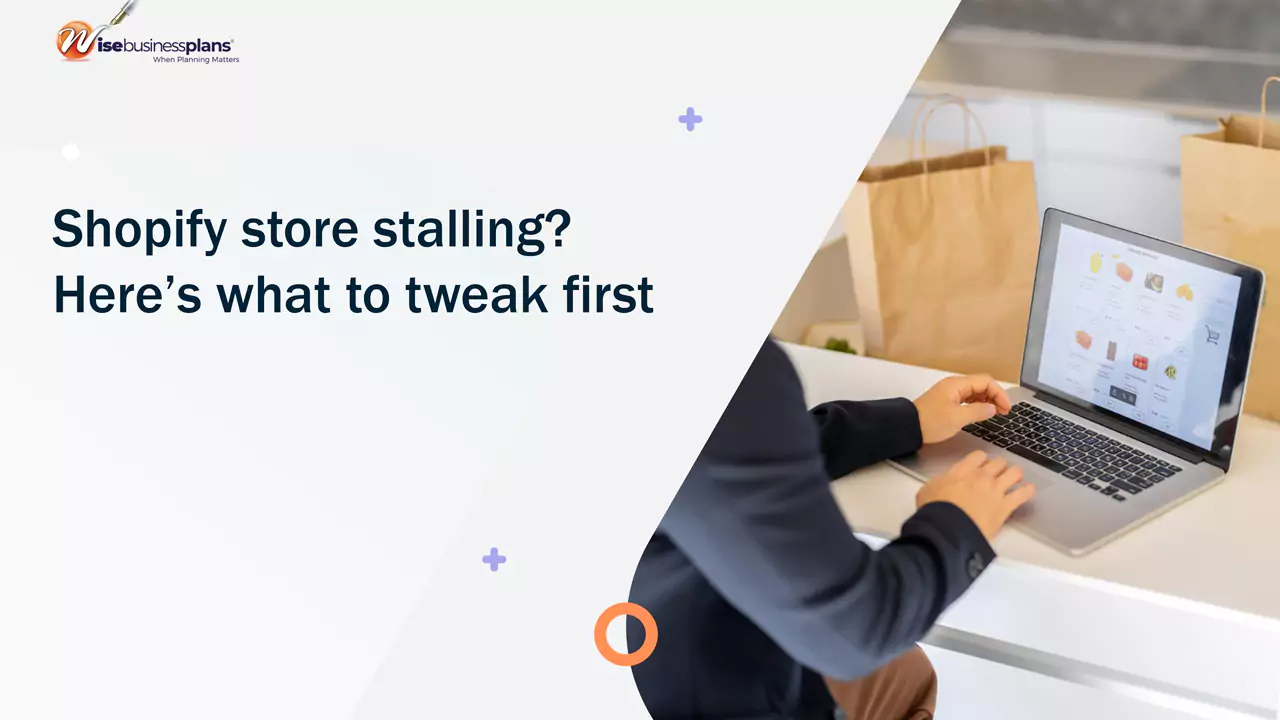Shopify store stalling? Here’s what to tweak first
Table of Contents
There’s nothing quite like the early rush of launching a Shopify store. You’ve got products up, a clean layout, and a checklist longer than your arm. The first few sales trickle in, maybe even a good week or two—and then… crickets. Or worse: inconsistent traffic, odd bounce rates, and an unnerving sense that something just isn’t clicking.
If your Shopify store has stalled, it doesn’t always mean you’ve done something wrong. But it probably means a few things need revisiting. Not redoing—just refining. Before you fall down the rabbit hole of overhauling everything, focus on the few areas most likely to move the needle.
Are you giving the right signals to the right people?
One of the first culprits of a stalling store is misalignment: your audience isn’t connecting with the way your brand is showing up. And this often has nothing to do with your product. It’s the messaging, visuals, or even something as basic as page load time that’s subtly pushing visitors away.
Start with your homepage. What’s the first impression someone gets? If it’s cluttered, vague, or slow to load, many won’t stick around. Your bounce rate will quietly reflect that—even if your products are excellent.
Then there’s the copy. Not just what it says, but how it sounds. Does your brand voice reflect the values and emotions of your target customer? Or is it generic? Tweaking tone can have a surprisingly large impact—people trust what feels like it was written for them.
Where’s the traffic going—and why?
Analytics rarely lie, but they don’t always tell the full story either. You might be getting traffic, but is it converting? Are visitors landing on product pages or bouncing from blog posts? You can have all the eyes in the world on your site, but if they’re not the right ones, it won’t matter.
This is where how you attract your visitors matters. SEO, ads, and social media can bring people in—but whether they stay comes down to relevance. So if you’re re-evaluating traffic strategies, make sure you’re focused on growing Shopify traffic the right way. That means targeting based on actual buyer intent, not vanity metrics or empty clicks.
It’s not about more traffic—it’s about better traffic. If your current efforts feel like shouting into the void, it might be time to reconsider the funnel: what you’re offering, where you’re offering it, and whether the path from ad or search result to product is as seamless as you think.
Conversion, clarity, and the invisible drop-off
Let’s talk about conversions—the moment when someone decides, “Yes, I want this.” If you’re getting traffic and still seeing stagnation, this is where to look next.
A common misstep? Asking for too much, too soon. Long forms, forced account creation, or unclear shipping costs can sabotage what would otherwise be a smooth purchase. The modern customer is impatient (not rude, just… efficient). Every extra click is a potential exit point.
Then there’s clarity. Are your product descriptions doing real work? Do they actually answer the customer’s unspoken questions—What’s in it for me? Is it worth the price?—or are they just keyword-stuffed placeholders?
And don’t underestimate the power of proof. Reviews, social proof, clear return policies—all of these build trust. Without them, even the most beautiful store can feel strangely empty, like a shop window with the lights off.
Mobile isn’t optional—it's central
This might seem obvious, but mobile optimisation is still a blind spot for many. If your store looks good on desktop but feels clunky on mobile, you’re alienating a huge slice of potential buyers. Not to mention, Google’s ranking will quietly punish you for it.
Speed matters here too. Compress images, ditch bloated apps, and keep things minimal. Test checkout on different screen sizes. If the process feels annoying to you, it’s probably unbearable to someone on the bus during their lunch break.
Email flows and the “almost customers”
If you’re not nudging visitors after they leave, you’re missing out on low-hanging fruit. Email isn’t just for receipts and promotions—it’s a chance to re-engage people who nearly bought something.
Abandoned cart sequences, welcome flows, post-purchase check-ins—they all matter. And when done well, they don’t feel spammy; they feel helpful. (Think: “Hey, you left this in your cart” versus “Hurry! Only 2 hours left for 5% off!”)
And if email isn’t your thing, consider SMS or even retargeting ads with subtlety. The key is to stay relevant without being relentless.
A final word: don’t panic-pivot
When a store stalls, the instinct is often to start from scratch. New products, new branding, new platforms. But most of the time, that’s not the answer.
Instead, tweak. Observe. Test. Then tweak again.
Chances are, you’re not far off. Your store doesn’t need to be reinvented. It just needs to reconnect—with the right people, through the right signals, at the right time. Reboot your ecommerce strategy by integrating expert insights from a business plan writer into your business plan.
If you keep that as your north star, growth becomes a lot less mysterious—and a lot more manageable.

